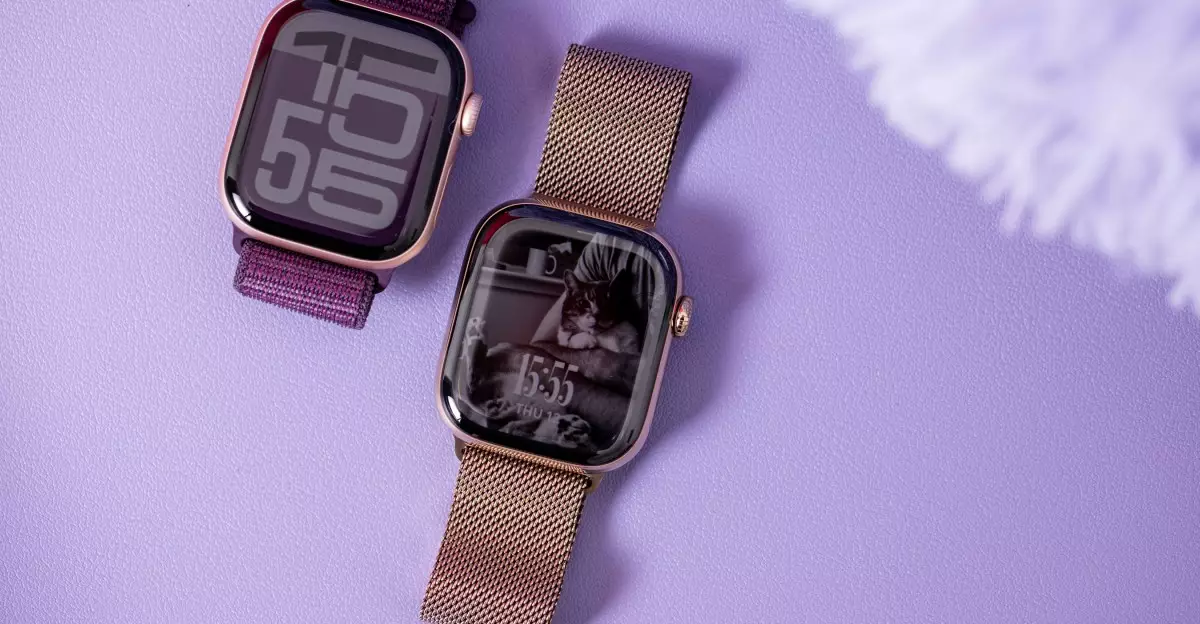In a world increasingly dominated by technological advancement, Apple is gearing up for a significant transformation in the wearable tech landscape. According to Bloomberg’s Mark Gurman, the tech giant is on track to launch camera-enabled wearables equipped with artificial intelligence capabilities by 2027. This ambitious project promises to elevate the standard for smart devices and reshape how we engage with technology in our daily lives.
A focal point of this evolution is the integration of AI features such as Visual Intelligence into the Apple Watch. As reported, the camera will be seamlessly embedded within the display of the standard Apple Watch, while the Apple Watch Ultra will introduce a side-mounted camera located near the digital crown. This clever design aims to allow devices to ‘see’ and interpret the world around them, providing users with relevant information through AI processing in real-time.
Transforming Everyday Interactions
Imagine standing in front of a restaurant, and your Apple Watch not only identifies it but also pulls up reviews, current menus, and nearby dining options—all thanks to its camera and AI integration. This is not science fiction but rather a glimpse into the next era of wearable technology facilitated by Apple’s new Visual Intelligence features. By connecting such capabilities with the newly unveiled iPhone 16, Apple aims to create an ecosystem where wearables and smartphones work in harmony to enrich user experiences.
Gurman’s insights extend beyond the watch realm, hinting at similar camera functionality being developed for AirPods. The potential for sound-enhanced wearables to accompany visual components creates an exciting notion of a multi-sensory interaction model. This dual-sensory approach is a tantalizing prospect, offering users a richer tapestry of information and interaction in their tech-laden lifestyles.
The Power of In-House AI Models
A critical aspect of this initiative is Apple’s intent to move toward proprietary artificial intelligence technologies rather than relying solely on third-party models. Alongside Gurman’s landscaping of AI features, he highlights that the current capabilities are underpinned by external models, yet Apple aspires to develop its in-house solutions by 2027. This strategic shift could not only enhance the performance and accuracy of AI functions across devices but also reaffirm Apple’s commitment to privacy—a crucial selling point for an increasingly consciousness-driven consumer market.
Mike Rockwell’s leadership in this venture further emphasizes the company’s long-term vision for AI and augmented reality (AR), aligning perfectly with Apple’s historical prowess in innovation. Previously involved in the Vision Pro project, Rockwell is set to bring these advanced technologies into the next generation of wearables, potentially paving the way for AR glasses that synergize with the AI-powered ecosystem.
A Glimpse Into the Future
While the rollout of these advanced wearables is still a few years away, the prospective integration of AI and camera technology paints an optimistic picture for Apple’s trajectory. This shift is not merely about adding features but rather creating devices that fundamentally redefine user interactions and experiences. As we move toward a future where daily tasks could be intricately woven with intelligent assistance, it will be fascinating to witness how Apple leverages this revolution in wearables, setting a new benchmark for competitors within the tech arena.

